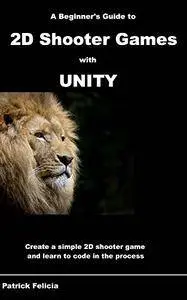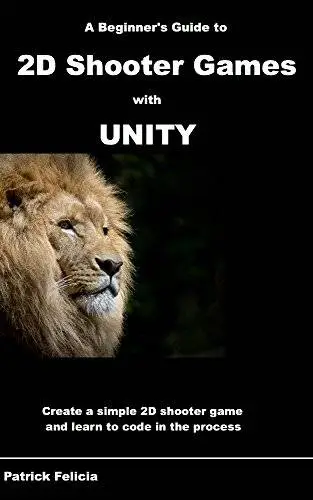A Beginner's Guide to 2D Shooter Games with Unity: A Beginner's Guide to 2D Shooter Games with Unity: Create a Simple 2D Shooter Game and Learn to Code in C# in the Process by Patrick Felicia
English | 2 Feb. 2017 | ISBN: 1542900492 | 142 Pages | PDF (conv) | 3.01 MB
English | 2 Feb. 2017 | ISBN: 1542900492 | 142 Pages | PDF (conv) | 3.01 MB
In this book, the second in the "Beginner's Guide" series, you will create a simple 2D shooter game, create challenging gameplay and learn techniques to code more in less time.
This book can be read as a standalone (you don't need to have read the previous books in the series, although it may help) and focuses on: scoring system and lives (e.g., keeping track of the score), user interface (menus and in-game information for 2D games), movement of the spaceship (e.g., left, right, up and down), missiles and explosions (i.e., fire missiles or create animated explosions upon collision), Artificial intelligence (e.g., moving independently or attacking the player) and improving your C# programing and Unity skills (e.g., important and useful functions and principles that you can reuse in your own games).
The main idea behind this book is to save you some headaches when you need to create your 2D shooter and to help you to find the time to actually code your game, by explaining simple and effective ways and best coding practices that you can use easily to create more code (and games) in less time with less stress and more fun.
The content of each chapter is as follows:
Chapter 1, Creating a Simple Level, shows you how to create a simple level for a shooter game including a spaceship that you can move in all directions, missiles that you can fire, and meteorites that appear in random locations and that can be destroyed or avoided by the player.
Chapter 2, Adding Special Effects, explains how it is possible to create simple, yet effective, visual effects to improve your game. Along the way, you will learn how to use sprite sheets and slice them to create your own animations.
Chapter 3, Improving our Game, explains how you can add some interesting Artificial Intelligence to the NPCS (i.e., enemies) so that they can detect and shoot at the player; you will also learn how to keep track of the health of the player and the NPCs.
Chapter 4, Polishing-up the game, shows and explains how to make the game even more challenging by progressively increasing the difficulty levels of the game, to add a temporary shield to the player, along with sound effects.
Chapter 5 provides answers to Frequently Asked Questions (FAQs) related to the topics covered in this book.
Chapter 6 summarizes the topics covered in the book and provides you with more information on the next steps.
The method explained in this book has been tried-and-tested, and I can guarantee that after reading this book, you will be able to create your own 2D shooter games; this is because the book includes step-by-step instructions, plenty of screenshots and explanations, and a format that is easy to read (just like a friend or a friendly instructor would explain coding to you: in a casual way, yet concise, accurate, and informative).
After buying the book, you also get access to the author, if you have any question, and to plenty of free add-ons worth over $100 exclusively made available to you including a member area with weekly updates, a private Facebook group where you can post your questions, over 25 tutorials (video and text), cheat sheets, discounted paperback copies, and much more!



